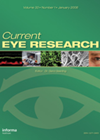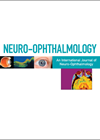
Journal Reviews
Detecting glaucoma with only OCT
In this review article, the authors describe a probability model based upon only OCT to detect glaucoma. They explain how normal anatomical variation can lead to false positives and applying a model to account for this improves specificity. The application...
Occult central retinal artery occlusion
Central retinal artery occlusion (CRAO) is a sight-threatening condition resulting from occlusion of the central retinal artery and hypoperfusion of the inner retina. Early on, fundal examination may be normal. The authors present a retrospective case series of 11 patients...
Sickle cell maculopathy
This paper reports the result of a prospective study to analyse the prevalence of sickle cell maculopathy (SCM) and its associations with age, sex, genotype, proliferative sickle cell retinopathy (PSR) stage, and the impact on visual acuity (VA). This study...
Transient macular thinning with Densiron 68
Densiron 68 is a heavy silicone oil (HSO) used to treat rhegmatogenous retinal detachments (RRD) with inferior retinal breaks. The authors compared changes in retinal thickness during and after the use of Densiron endotamponade, and looked at any association between...
Investigating the effect of signal strength on mean retinal nerve fibre layer
The aim of this study was to determine the effect of signal strength on mean retinal nerve fibre layer (RNFL) using spectralis optical coherence tomography (S-OCT). Thirty normal subjects were imaged with S-OCT using variably dense Bangerter foils to alter...
Glaucoma and capillary perfusion
Elevated IOP is important but not the sole factor responsible for retinal ganglion cell (RGC) death and optic nerve damage in glaucoma. There is increasing evidence that visual loss correlates with macular inner retinal thinning. A total of 148 eyes...
OCT changes in chronic optic neuropathy
The authors evaluated optical coherence tomography (OCT) angiography in 10 patients who suffered various types of chronic optic neuropathies. Glaucoma is known to cause a decrease in peripapillary perfused capillary density on OCT angiography. However, other optic neuropathies have not...
Long-term retinal changes following unilateral retrobulbar optic neuritis
The aim of this study was to assess the longitudinal changes in retinal nerve fibre layer (RNFL) thickness after a first attack of optic neuritis and to investigate the impact of treatment on RNFL thinning at one year after the...










